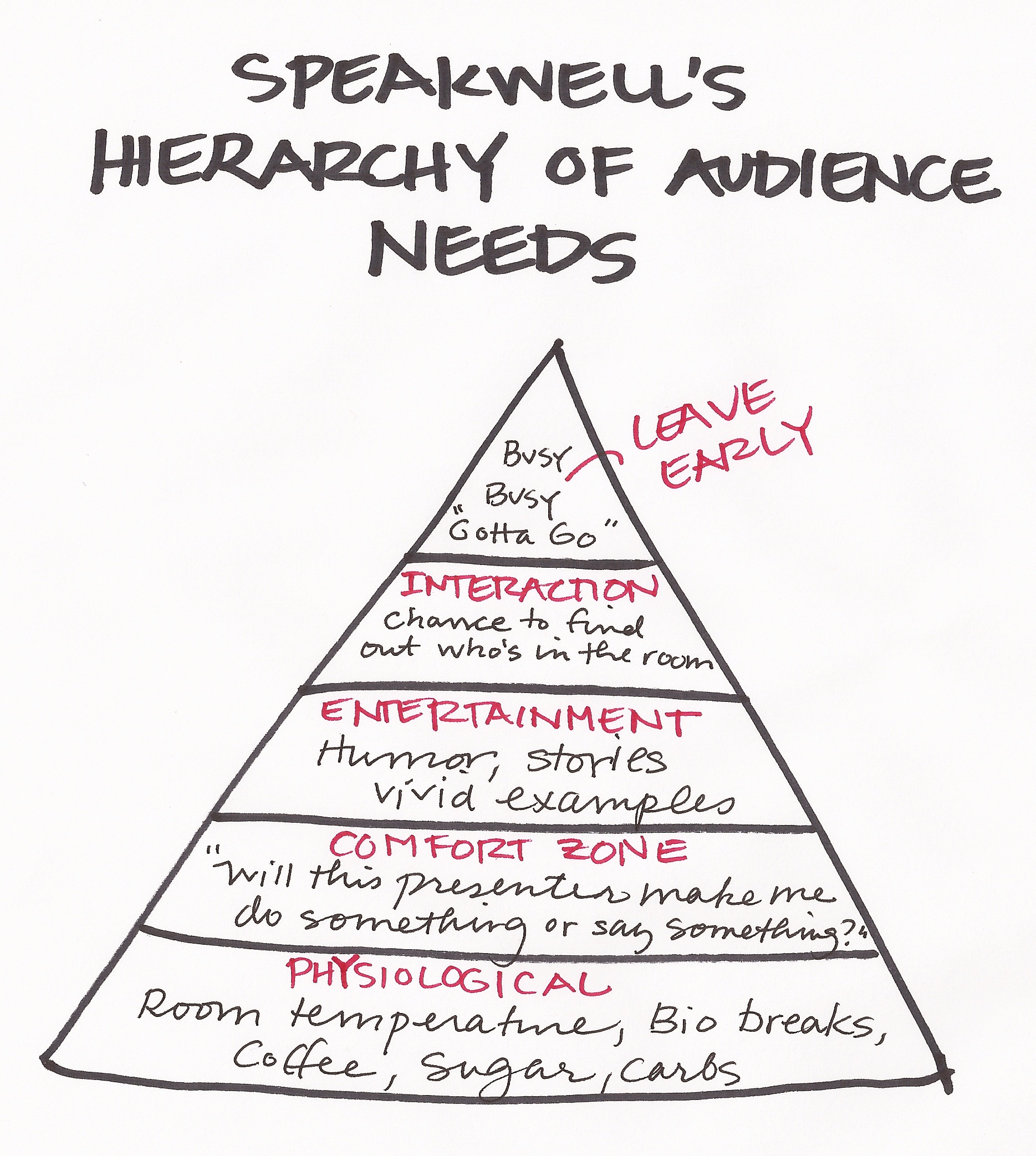 Have you ever been in a presentation in which the speaker seemed like they were on another planet? You stop listening because you’re thinking, “Hellooo…earth to speaker…come in please.” Your neighbor turns to you and says, “Does she know she was supposed to finish twenty minutes ago?!” Or, you overhear the people behind you say, “We went over all this stuff last month. How does he not remember that?”
Have you ever been in a presentation in which the speaker seemed like they were on another planet? You stop listening because you’re thinking, “Hellooo…earth to speaker…come in please.” Your neighbor turns to you and says, “Does she know she was supposed to finish twenty minutes ago?!” Or, you overhear the people behind you say, “We went over all this stuff last month. How does he not remember that?”
There is only one way to avoid being that speaker. You need to stay tuned in to your audience. The first mistake speakers make is memorizing their speech. They get so focused on delivering each word that they lose eye contact and well, any connection at all with their audience. The second mistake is believing that every single idea, concept, or topic in your script must be covered. It’s all so vitally important that nothing can be omitted. In Hollywood that’s called believing your own press.
Last week I gave my umpteenth presentation in a room with no temperature control. I was told later that it was a faulty censor. When we started it was a bit uncomfortable. One hour into a three-hour presentation it was an oven. I called the maintenance staff. I opened every door. I ordered more ice for cold drinks. I had people up out of their chairs and interacting in the hopes it would take their mind off the stifling heat. Nothing was going to resolve the situation – except to end early. This is where a speaker’s flexibility comes in.
On the way home I got to thinking about Maslow’s Hierarchy of Needs – that humans must have food and shelter before anything else can be asked of them. And that got me thinking about the hierarchy of needs for the average business audience. The image above is what I came up with.
- If your room does not provide the basic needs like 70-degree temperature, coffee, sugar and accessible bathrooms, then you are doomed before you start. Can you address any of these before you show up? If so, do it.
- If the basics are provided, then the next concern for audience members is whether their comfort zone will be tested. Will they have to do something or say something that feels risky. “Will I have to catch someone as they fall backwards?!”
- Next up is the need to be entertained. Did you include stories and vivid examples in your outline? Also, if you feel comfortable doing so, can you add a bit of humor to your talk? In this age of Kardashians and Situations, it pays to increase the entertainment value.
- Now we’re at the fourth level on the audience hierarchy: the chance to find out who’s in the room and to actually get to talk conversationally and who knows – maybe even find a date for Saturday night! How can you include some sort of interaction in your presentation?
- Finally, speakers are constantly up against the Crackberry, attention-deficit and over-scheduled culture we all live in. Save one of your key takeaways for the end (and tell them that up front) but provide enough content before the end of your session so that people are not resentful that you forced them to stay until the last minute to get the one thing they needed.
Meeting every need on this hierarchy cannot be practiced in your living room. You only get good at being audience-centric by focusing on it in real time.
Next up, the Speaker’s Hierarchy of Needs.
– Barbara

